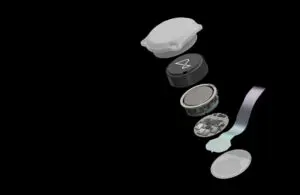
Elon Musk’s Neuralink brain-computer interface (BCI) venture showed the early results from the first patient to receive its brain chip implant.
A nine-minute livestream demonstration on Musk’s “X” social media platform (formerly known as Twitter) showed Noland Arbaugh using the Neuralink BCI to move a computer cursor and play chess online.
Arbaugh, a quadriplegic, said he was paralyzed below the shoulders in a diving accident eight years ago. His use of the Neuralink BCI to play chess marks the first public demonstration of the potential of the brain implant in humans.
“I love playing chess,” Arbaugh said on the livestream. “This is something you all have enabled me to do. … It’s all being done with my brain.”
Arbaugh went on to say in the broadcast from Neuralink’s account: “It’s crazy. It’s so cool. I’m so lucky to be a part of this. Every day, it seems like we’re learning new stuff and I can’t even describe how cool it is to be able to do this.”
The company won a regulatory nod in May for its first-in-human implant, and in September it opened up recruitment for its clinical trial. Musk also announced in August that Neuralink brought in $280 million, and the company in November added a further $43 million.
Musk said in January that the first patient received their implant, which he plans to call “Telepathy.” Remotely rechargeable, the implant goes along with electrode-laced threads that go further into the brain. Neuralink also has an R1 robot meant to implant the BCI system while avoiding vasculature.
The latest progress for Neuralink comes after questions arose around animal practices at the company. Additionally, some neuroscientists have frustrations about the lack of detailed information besides Musk’s social media posts.